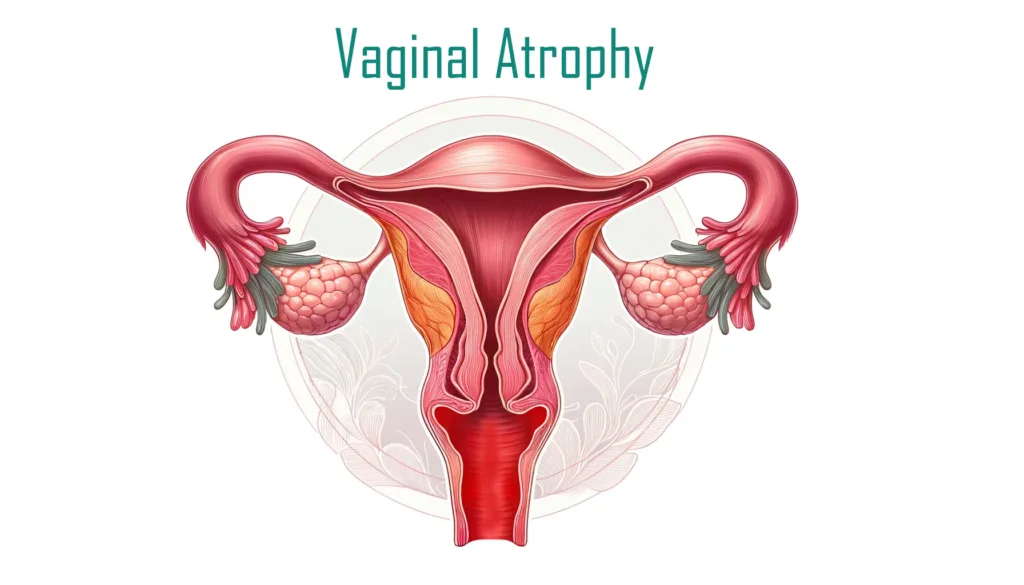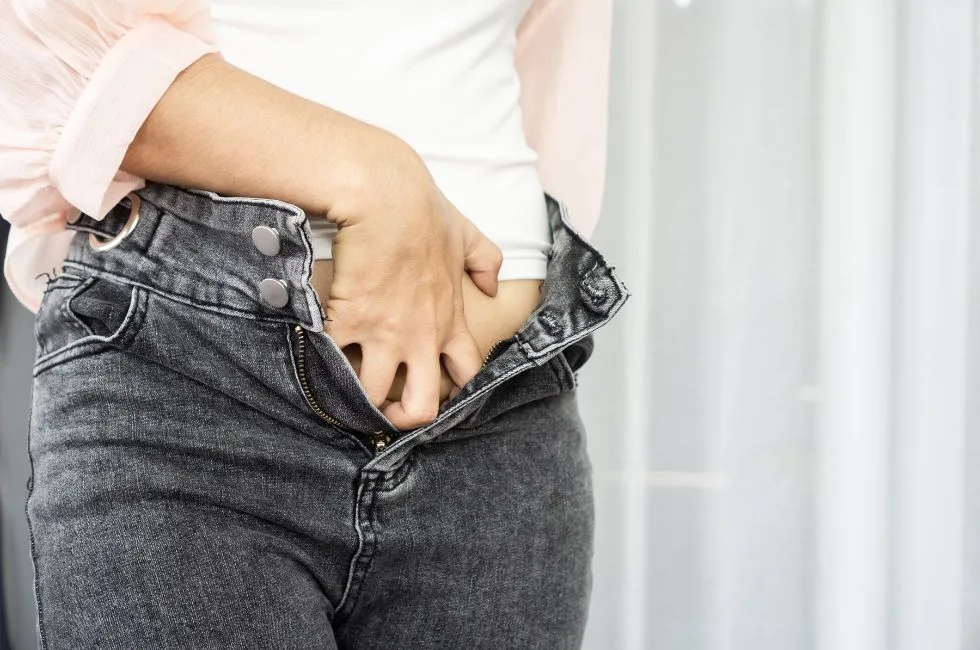Vaginal atrophy, a condition many women encounter yet seldom discuss, significantly impacts the quality of life, particularly in postmenopausal women. This condition, intimately linked with declining estrogen levels, leads to changes in the vaginal area that can affect personal comfort, sexual health, and overall well-being.
What is Vaginal Atrophy?

Vaginal atrophy, also known as atrophic vaginitis, is a condition that primarily affects the vaginal tissue due to a decrease in estrogen levels. Estrogen, a hormone pivotal in maintaining the health and functionality of the vaginal walls, plays a significant role in keeping the tissue moist, elastic, and well supplied with blood. As women age, particularly during and after menopause, estrogen levels naturally decline. This reduction can cause the vaginal walls to become thinner, dryer, and less elastic, a condition medically termed as vaginal atrophy.
The changes in the vaginal tissue not only lead to physical discomfort but can also affect sexual activity. Women experiencing vaginal atrophy often report a decrease in lubrication, making sexual activity uncomfortable or even painful. This can have a substantial impact on sexual health and intimacy.
Causes of Vaginal Atrophy
Menopause and Perimenopause
The most significant drop in estrogen levels occurs during menopause and the transitional phase leading up to it, known as perimenopause. This hormonal shift is the primary reason behind the development of vaginal atrophy in many women.
Breastfeeding and Postpartum Changes
After childbirth, particularly during breastfeeding, women may experience a temporary drop in estrogen levels, which can lead to symptoms of vaginal atrophy.
Ovarian Dysfunction or Removal
Conditions affecting the ovaries, such as polycystic ovary syndrome (PCOS), or surgical removal of the ovaries, can result in decreased estrogen production, contributing to vaginal atrophy.
Cancer Treatments
Certain cancer treatments, including chemotherapy and pelvic radiation therapy, can affect ovarian function and lead to a decrease in estrogen levels.
Hormonal Medications
Some hormonal medications, especially those used in breast cancer treatment like aromatase inhibitors, can lower estrogen levels and potentially lead to vaginal atrophy.
Lifestyle Factors
Smoking has been shown to affect blood flow and hormonal balance, potentially contributing to the development of vaginal atrophy. Additionally, a lack of sexual activity can exacerbate the symptoms, as regular sexual activity helps maintain the elasticity of vaginal tissues.
Symptoms of Vaginal Atrophy

Vaginal Dryness
One of the most noticeable symptoms, vaginal dryness, is often the first sign of atrophy. It can lead to discomfort during daily activities and sexual intercourse.
Discomfort or Pain During Sexual Activity
Due to decreased lubrication and thinner vaginal walls, sexual activity can become painful, which can significantly impact sexual health and intimacy.
Vaginal Itching and Burning
The thinning and drying of vaginal walls can lead to irritation, itching, and a burning sensation in the vaginal area.
Decreased Vaginal Lubrication
Alongside dryness, there’s often a noticeable decrease in natural vaginal lubrication, which can make sexual activity less enjoyable and more challenging.
Vaginal Inflammation
Inflamed and irritated vaginal tissues can result in a condition known as vaginitis, contributing to overall discomfort.
Urinary Symptoms
Vaginal atrophy can also affect the urinary tract, leading to symptoms like urgency, increased frequency, and urinary tract infections (UTIs).
Changes in Vaginal Discharge
There may be changes in the amount, color, or consistency of vaginal discharge.
Vaginal Bleeding
Though less common, some women may experience light bleeding or spotting, particularly after sexual intercourse.
Diagnosis of Vaginal Atrophy
Medical and Sexual History
The healthcare provider will first take a detailed medical and sexual history. This may include questions about menopausal symptoms, the onset and severity of vaginal symptoms, history of cancer treatments, and any hormonal medications being used.
Physical Examination
A pelvic examination is conducted to assess the health of the vaginal tissue, vaginal walls, and urinary system. The doctor looks for signs of thinning vaginal walls, dryness, and inflammation.
Vaginal pH Testing
Since vaginal atrophy often results in an increased vaginal pH, a simple pH test can be a helpful diagnostic tool.
Vaginal Smear Test
A sample of vaginal cells may be taken to examine the effects of estrogen on the vaginal lining. This test helps in determining the thinning of vaginal tissues due to decreased estrogen levels.
Urinalysis
To rule out urinary tract infections, which can occur more frequently in women with vaginal atrophy, a urine sample may be tested.
Treatment Options
A. Hormone Replacement Therapy (HRT)
- Systemic Estrogen Therapy: This involves taking estrogen orally or through skin patches. It’s generally used for women who have menopausal symptoms beyond vaginal dryness and atrophy, like hot flashes.
- Topical Estrogen Treatments: These are applied directly to the vaginal area and include:
- Vaginal Estrogen Cream: Applied directly to the vaginal tissues to help rejuvenate and lubricate the area.
- Soft Flexible Ring: Inserted into the vagina, releasing a consistent low dose of estrogen directly to vaginal tissues.
B. Non-hormonal Treatments
- Vaginal Moisturizers: Designed for regular use, these moisturizers help maintain moisture and elasticity in the vaginal tissue.
- Water-based Lubricants: Used primarily to alleviate discomfort during sexual activity, these lubricants can provide temporary relief from vaginal dryness.
Managing Symptoms and Preventing Complications
Regular Use of Vaginal Moisturizers and Lubricants
Regular application of vaginal moisturizers can help maintain moisture levels in the vaginal tissue. During sexual activity, water-based lubricants can reduce discomfort by enhancing lubrication.
Engagement in Sexual Activity
Regular sexual activity, whether with a partner or through self-stimulation, can improve blood flow to the vaginal area, helping to maintain tissue health and elasticity.
Pelvic Floor Exercises
Strengthening the pelvic floor muscles can improve urinary symptoms and enhance sexual function.
Hygiene Practices
Maintaining good genital hygiene, while avoiding harsh soaps and products that can irritate the vaginal area, is crucial.
Monitoring for Urinary Symptoms
Being vigilant about urinary tract symptoms, such as burning during urination or frequent urges to urinate, is important. Early treatment of urinary tract infections can prevent complications.
Lifestyle Changes and Home Remedies

Stay Hydrated
Adequate hydration can help maintain overall skin and mucous membrane health, including that of the vaginal tissue.
Balanced Diet
A diet rich in phytoestrogens (plant estrogens) like soybeans, flaxseeds, and whole grains may offer some benefit. Calcium and vitamin D are also important for bone health, particularly post-menopause.
Avoid Smoking
Smoking not only affects overall health but can also decrease blood flow to the vaginal area, exacerbating symptoms of atrophy.
Stress Management
Stress can affect hormonal balance and overall health. Practices like yoga, meditation, and regular exercise can be beneficial.
Vaginal Health Supplements
Some women find relief with over-the-counter supplements designed to support vaginal health, but these should be used under the guidance of a healthcare provider.
Wearing Comfortable Clothing
Avoiding tight clothing and opting for breathable, natural fabrics can help reduce irritation in the vaginal area.
Avoiding Irritants
Steering clear of scented products, douches, and harsh soaps that can irritate the vaginal area is crucial.




